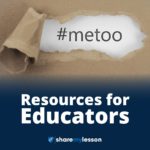This lesson provides information and activities about one American Indian Nation, the Anishinabe, called Ojibwe in Canada and Chippewa in the U.S., and engages students in research on its history, location, and past and present culture.
Landmarks of American History and Culture
This Teacher’s Guide provides information and resources for integrating creative approaches to place-based history in K-12 humanities education. As tangible reminders of the past, memorials and monuments, as well as neighborhoods, historic homes, waterways, and many other sites, have the power to influence how we interpret contemporary society. The resources herein address public history and the disciplines that fall within the field; NEH Landmarks of American History and Culture programs and the resources that have been developed for educators; and access to sites included in the National Register of Historic Places and National Historic Landmarks. By introducing historic and cultural sites into the classroom setting, students can develop a greater understanding of the reality and prevalence of history in their local landscape.
The Me Too Movement: Resources for PreK-12 Teachers and School Staff

The #MeToo and #MeTooK12 movement is an opportunity for schools to reflect on how to address issues of consent, sex education, relationships and undoing a pervasive culture of silence. April is also Sexual Assault Awareness month. The Share My Lesson team curated a collection of free resources to help educators with critical conversations and lesson planning, as well as school procedures and policies and opportunities for reflection.
Celebrating Asian American Pacific Islander (AAPI) Heritage

Join the Share My Lesson community in celebrating the generations of Asian and Pacific Islander Americans who have enriched global society, playing a critical role in its development and success. With our wealth of prek-12 digital resources, you and your students can explore the remarkable contributions that AAPI Americans have given to history, culture, the sciences, industry, government and more. In addition to recognizing the vast achievements of the AAPI community, work with your students and community to understand diverse perspectives and the difficult struggles that AAPI Americans have grappled with throughout the history of the United States.
Learn About Black History, Culture and Politics
Learn about Black history in the United States before and after the Civil War; the Civil Rights Movement; the history of Africa; African American art; and African American trailblazers.
Not “Indians,” Many Tribes: Native American Diversity
In this unit, students will heighten their awareness of Native American diversity as they learn about three vastly different Native groups.
Indian Boarding Schools Primary Source Set
Through photographs, letters, reports, interviews, and other primary documents, students explore the forced acculturation of American Indians through government-run boarding schools.
Hispanic and Latino Heritage and History in the United States
Since 1988, the U.S. Government has set aside the period from September 15 to October 15 as National Hispanic Heritage Month to honor the many contributions Hispanic Americans have made and continue to make to the United States of America. Our Teacher’s Guide brings together resources created during NEH Summer Seminars and Institutes, lesson plans for K-12 classrooms, and think pieces on events and experiences across Hispanic history and heritage.
The Geography of the United States (CKHG Unit)

This unit reinforces map and globe skills as students learn about the geographic characteristics of different regions of the United States: New England, Mid-Atlantic, South, Midwest, Great Plains, Rocky Mountain, Southwest, and West Coast. Across 13 lessons, students explore the climate, natural resources, culture, and other distinctive characteristics of each region.
“Story” from Essential Lens: Analyzing Photographs Across the Curriculum
Every photograph tells a story: Stories of struggle. Stories of beauty. Stories of community and culture. This video offers stories of three people and what compels them to do what they do. Hear from a high school teacher using the Protests and Politics photo collection from this resource (link to collection and big ideas on page), a National Geographic photo editor, and photographer Danny Wilcox Frazier who discusses his work, which focuses on marginalized communities across the United States.